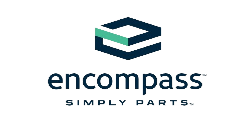Sustaining Parts Supply through Aftermarket Repair Programs
repairs are just a few of the most challenging aspects of maintaining a strong
aftermarket supply chain. With long lead
times from overseas suppliers and component pricing that can make repairs
unfeasible, most manufacturers and distributors have had to implement repair
programs to help sustain parts supply by adding a core value to those parts that
are repairable.
 |
| Robert Coolidge President & CEO |
and consumer electronics industries for many years. Certain high-demand service
parts that can be rebuilt and reinserted into the supply chain are designated
“cores” and carry a core charge or “deposit” based on a percentage of the
initial part price.
charge is credited back once the defective part is returned to the manufacturer
or parts distributor within a certain time period – similar to soda bottle
deposits of the past. Printed circuit boards are the most common core parts,
but a core can be any high-value part that is able to be salvaged and repaired,
such as Icemakers, Control Boards and Motors. There is also just as much value
in repairing new, defective parts by eliminating operations costs and the laborious
process of returning these parts, obtaining replacements and issuing credits.
repair model are missing a significant opportunity to realize a host of
benefits. Beyond simply extending the lifecycle of a particular service part
and lowering warranty costs, the process can also minimize last time buys and
the eminent risk of obsolescence. Instead of having to predict a product’s unknown
failure points and stock up on parts accordingly, manufacturers/distributors
can assess what parts are repairable and procure a lesser quantity that can be
recycled indefinitely to supplement the supply chain and enhance manufacturer
brand loyalty.
an out-of-stock part back to the marketplace. Plus, a coordinated core recovery
program between a manufacturer and distributor helps combat the gray market
– or at least increase pricing in the
gray market and close the gap as now those unauthorized channels must compete
for the cores and at a higher price. People
are opportunistic when it comes to business survival; nothing creates more
uniqueness and creativity than adversity, which drives this channel.
supports core recovery and repair for numerous manufacturers, providing full
visibility and control over the parts repair process – along with providing a
revenue source (albeit minor) through core breakage that they would not
otherwise attain. In addition to the
recovery and repair process, Encompass can also provide valuable details about
failure points that can be passed down to the manufacturer and ultimately the
design engineers to help avoid such failures on future builds.
incumbent upon distributors to improve their value proposition to the market
and the manufacturers they represent. Core
and high run rate part repair programs are a key factor in driving that value.




Leave a Reply